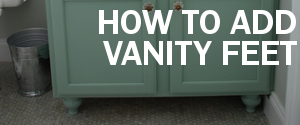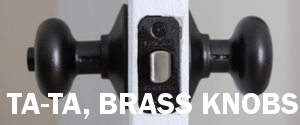We bought our penny tile backsplash, and after lots of reading and researching how to install it, we were ready to DIY this bad boy.
Supplies
Penny Round Tile (Moss), Pro-Flex Platinum (White), Nippers, 3/16″ Trowel, Sanded Grout (Desert Sand), Grout Float, Flexible Admixture, Tile and Grout Maintenance Kit, Sponge, Buckets (2)
1. Prep
Before mixing any thinset, I laid out the penny round tile and cut out pieces to fit in the space and around light switches. The penny tile is backed with mesh, so it was easy to cut apart. I wanted to install it stacked like bricks to minimize any seams between the pieces.

I cut apart individual tiles and used tile nippers to cut pieces in half. We’ll be using those around the edges.

2. Thinset
We use Pro-Flex Platinum thinset. I mixed it by adding it to a pail, then slowly adding water and mixing until it was a peanut butter/toothpaste/cake batter consistency. I used a wide putty knife to apply it (it was just more comfortable for me that way) and spread it out with the 3/16″ trowel. The Tile Shop advised using a smaller notch trowel for smaller tiles.

With the pieces cut out, application was pretty quick! It they stacked fast. To make sure I didn’t have any seams visible, I was step back, squint and tweak any of the penny tiles to make sure everything was aligned horizontally, vertically and diagonally.
If thinset is squishing through the tiles, it’s being applied to heavily. This stuff is like cement – it’s going to stick, even with just a thin coat.

Installation slowed down with the edge. I used the snipped half tiles to fill in areas around the edge. I used a cotton swab to dab a bit of thin set on, then smushed it into the empty space. Side note: see how we pulled out the electrical? Do this with the power off, it’s much safer!

The next day, after the thinset dried, the penny tile backsplash was looking pretty good. But without grout, it looked bizarre.

Here’s the other side of the kitchen. In all, we’re doing about 22 square feet of tile.

3. Grout
With the tile set, it was time to grout. I used a sanded pro-grout mixed with a flexible admixture, a milky substance that allows the grout to be more flexible and decrease the chances of crumbling. This was used in lieu of water.

Tip: Only make enough grout or thinset to last about 20 minutes, because it’ll start drying and be useless. I used the grout float to apply the grout: smush the grout in and drag the float to even it out. Easy peasy!

Then, I used a clean sponge to wipe off excess grout. The sponge needs to be wrung so it’s damp, but absolutely no water is dripping.

Here’s what the tile looked like after the grout. It was definitely hazy, in spite of the sponge bath, haha.

4. Clean
After the grout cured for 24 hours, I broke open the cleaning and maintenance kit.

Using the grout and tile neutral cleaner mixed with water, I wet the tile, let the soak, then scrubbed. A LOT. I may have been a bit of a freak about it. I used a toothbrush and cleaned every single tile, haha. But it made a huge difference.

5. Seal
Using the sealant that came with the kit, I sealed the grout. I put the clear liquid in a bowl and applied it with the foam brush included in the kit. This stuff warns that if it dries on the tile, it’ll leave a hazy white layer. So I kept a rag nearby and wiped off excess as I applied it.
6. Caulk
So, I started this one in the wrong order. Definitely clean first, caulk later, especially if you want to scrub with tile without jacking up the caulk. The caulk, which matched the grout, looked fantastic around the edges. It truly completed the project.

Let’s take a quick look at what the kitchen looked like a couple of months ago.

After painting the cabinets, rehabbing the counters, installing a new sink and faucet, a new dishwasher, and the penny tile backsplash, I was loving our kitchen’s new look. Definitely worth all the work.

You can see that we left the edge raw – we just finished it by filling in the gaps with  caulk. The light switch plate is slightly raised, but it’s not noticeable.

Ahhh, just image how lovely it’ll be with a dark wood floor. I’ll be so happy when that day comes. I’m so in love with our kitchen. We have another project up our sleeves right now, so I’m hiding the oven side of the room. Come back next week to see the results!













Is your ‘moss’ color penny round more gray than green (that’s how it looks in the picture)? The most recent Moss tiles at the Tile Shop are definitely green!
Thanks for your DIY experience. Great Job! I also bought penny round tiles from the tile shop. But I noticed the mesh backing on the mosaic is very thin and flexible. I am afraid the individual tiles will keep folding over when they are being installed. Other mosaic tile sheets I have seen have a stiffer mesh backing.
Did you experience this with your penny round tiles as well? If so, how did you handle it when installing?
Hi! I found you via Pinterest and am glad I did. I was at the Tile Shop yesterday to get info and inspiration for my DIY kitchen backsplash project. Your step by step was extremely informative and gave me the confidence to tackle my first tiling project. Not to mention I am probably going with the same tile you chose! Thank you!
That’s great! The folks there are super helpful and I was pleased with the results. If you need any one-on-one advice, just email me ([email protected]) or tweet me @livelygreendoor.